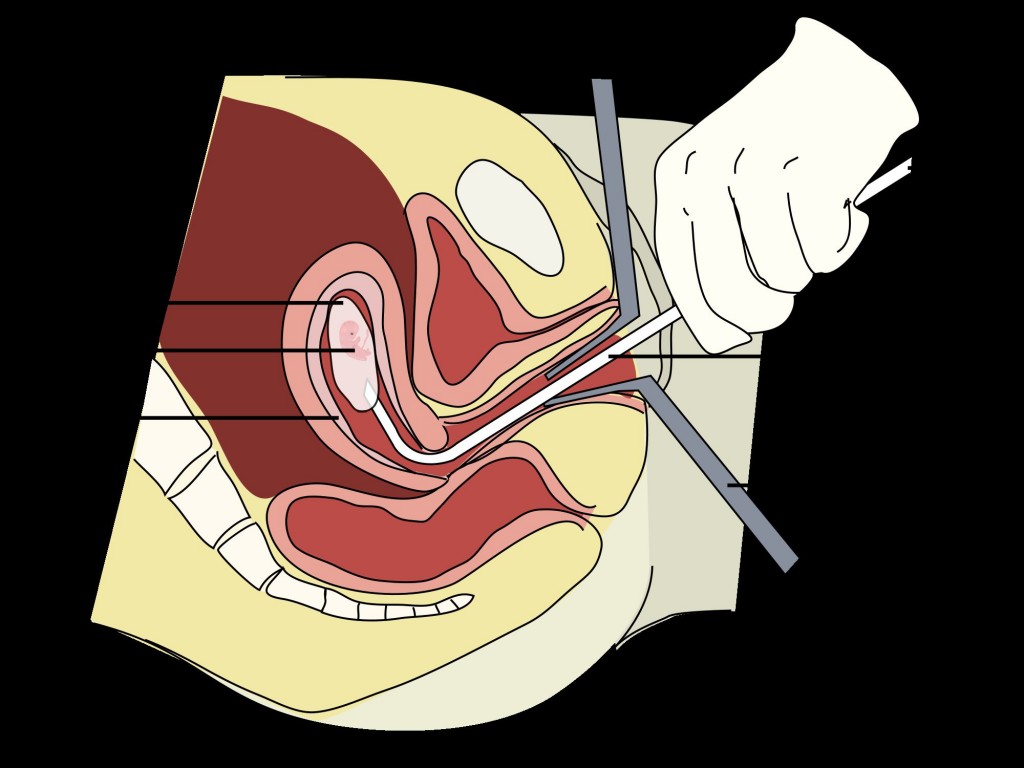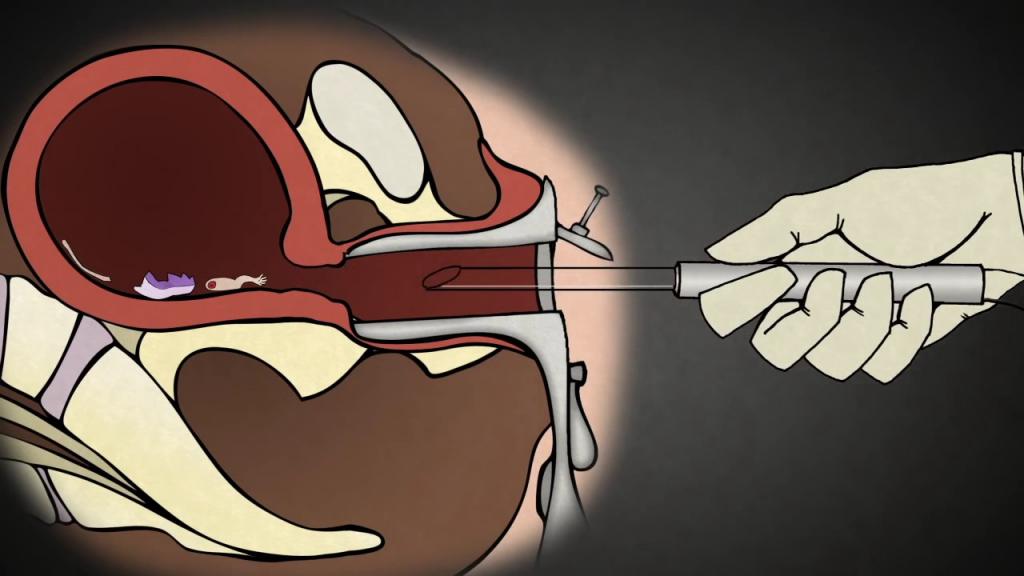Probably, there is no such woman who at least once did not think about the consequences of abortion. And all because the reasons why a potential mother can resort to an artificial termination of pregnancy, in fact, a huge amount. But before deciding on such a serious and even dangerous step, it is worth weighing the pros and cons, taking into account possible complications of abortion.
What does he mean for a woman
Few people disagree with the fact that pregnancy is a truly joyful, unique event in the life of every woman. Many women believe that there is nothing more beautiful than just feeling the delights of motherhood, holding your baby's hands and enjoying his smile. But due to certain circumstances, women often decide to terminate the pregnancy.
Abortion is a scary word for most girls that means killing a child. Despite the fact that doctors call such a tiny creation a fetus or an embryo, for any woman it is a defenseless, tiny person who also wants to live and enjoy. But be that as it may, in our country, abortion is a fairly common phenomenon. And an explanation of this can serve as a number of reasons that actually push a woman to this terrible step:
- material;
- social;
- medical indicators.
Often the reason lies in the concept of the woman herself, for whom real happiness lies not in motherhood at all, but in a successful career or wealth.
But be that as it may, the woman who made the decision to terminate the pregnancy should clearly realize that this is an extremely serious, important and dangerous step in her life. Due to certain physiological characteristics, the female body will always remember about the injury. But the woman herself will in every way try to forget about it. According to numerous studies, girls who have had an abortion very often cannot cope with the emotional and psychological problem on their own. As a result, many troubles arise in their lives:
- permanent, ongoing memories of the operation;
- mental experiences, self-flagellation;
- insomnia;
- outbreaks of anger, increased nervousness and irritability;
- sexual abnormalities;
- protracted depression, suicidal thoughts.
In gynecology, abortion is an artificial termination of pregnancy from 4 to 28 weeks. For medical reasons, abortion can be late and early. The latter is carried out up to 15 weeks of pregnancy. Late abortion can be done up to 28 weeks.
There are several types of abortion, which are selected taking into account the characteristics of the body, gestational age, woman's age. Sometimes abortion occurs without the desire of the woman herself. Obstetricians call this a spontaneous abortion. True, just a few years ago, many women consciously resorted to this method of abortion, using improvised means for this.
What you need to know about spontaneous abortion
The people have another name for this phenomenon - miscarriage. Spontaneous abortion occurs without the participation of the woman herself and the intervention of doctors. According to statistics, miscarriage occurs in about 15% of the fairer sex.
There are a huge number of reasons why a miscarriage can occur. The most common factors causing a miscarriage:
non-infectious and infectious internal pathologies, for example, tuberculosis, pneumonia, rubella, flu;
- cardiovascular defects;
- liver and kidney disease;
- intoxication of the whole organism;
- venereal diseases;
- autoimmune problems;
- hereditary factor;
- diseases of the central nervous system;
- vitamin deficiencies, most often E and A;
- oncological tumors;
- incompatibility of the blood of the fetus and mother;
- chromosomal abnormalities.
Any pathology and abnormality in the mother's body can become the cause of spontaneous abortion. Often there is an infection of the fetus, as a result of which it freezes, hypoxia develops, abnormalities in development, formation and growth - all this can lead to a miscarriage. That is why doctors advise both a man and a woman to undergo a full examination before conceiving a child.
Spontaneous abortion can occur at any time during gestation. It is characterized by the appearance of certain symptoms:
- vaginal discharge of blood;
- aching acute pain in the lower back and lower abdomen.
When these signs appear, a woman needs immediate hospitalization. If you see a doctor on time, you can even save the child. If a woman has abundant blood discharge with clots, it is unrealistic to maintain a pregnancy.
In addition, a woman may experience various complications of spontaneous abortion, which may be early or late:
- the origin of gynecological pathologies, for example, inflammation of the uterus, endometritis;
- prolonged bleeding
- frequent miscarriages;
- getting into the genitourinary system of infections;
- deviations in the work of the ovaries;
- lack of menstruation.
But even in the absence of negative consequences after a miscarriage, the female body takes some time to recover.
True, the incidence of complications after spontaneous abortion is much lower than with artificial termination of pregnancy. About 15-20% of women face the negative consequences of a miscarriage. Often, after a spontaneous abortion, it is still possible to conceive and endure a healthy child. If in the anamnesis of the expectant mother there are several miscarriages, she should constantly be under the supervision of doctors.
Unlike spontaneous abortion, artificial termination of pregnancy is performed only at the request of the woman or in the presence of specific medical indicators.
Types of Artificial Abortion
The main indications for the operation:
- the desire of the woman herself;
- the presence of intrauterine pathologies in the development of the fetus;
- medical indicators that can lead to the death of a child or mother.
Before an abortion, a woman must undergo a comprehensive examination.
The procedure itself can be performed in various ways. There are several types of abortion:
- vacuum;
- medication;
- surgical.
Vacuum Abortion
This procedure can be carried out up to 5 weeks of pregnancy. The vacuum technique is considered the most gentle and significantly reduces the risk of complications. Medical abortion is performed using a special device - a vacuum, which makes it possible to completely remove the fetal egg from the uterus.
But such a procedure is prohibited:
- if the gestational age is more than 5 weeks;
- if less than 6 weeks have passed since the last abortion;
- if a purulent infection is present in the genitourinary system;
- if inflammatory pathologies of the pelvic organs are detected;
- an acute infectious disease occurs in the body.

A vacuum abortion is performed under stationary conditions under local anesthesia. A special catheter is inserted through the cervix, which exerts negative pressure in the uterine cavity. As a result of this effect, the fetal egg breaks away from the wall of the mucous membrane.
The use of a vacuum catheter can reduce the risk of injuries and the development of complications of abortion. In addition, the probability of penetration into the cavity of the infection is significantly reduced. The procedure lasts approximately 10-15 minutes.
What complications can be after an abortion using a vacuum
Despite the minimal risk of negative consequences, in some cases some problems still arise.
- Partial removal of the ovum. In this situation, the woman needs additional surgical intervention. You can prevent the development of such an abortion complication if you have an ultrasound scan immediately after the operation.
- Hormonal disruptions. Almost always, they appear as menstrual irregularities.

Complications of medical abortion with a vacuum are not so common, but a woman should take all possible measures to prevent them.
Surgical abortion
Such an abortion can be performed between 6 and 22 weeks of gestation. Surgical abortion can be prescribed for certain medical conditions or in cases where a woman is determined not to give birth. Curettage is carried out exclusively in stationary conditions.
During an abortion, the cervix opens with the help of special devices, and then the fetal egg and partially the mucous membrane are scraped from the uterine cavity. The placenta is removed with a sharp spoon.

Surgical abortion can cause many negative consequences, including infertility.
What is fraught with curettage
During the procedure, too sharp devices are used, which significantly increases the risk of uterine injury. The most common complication of surgical abortion is heavy bleeding. In more complex situations, even death is not excluded.
An important role is played by the qualifications and skills of the gynecologist conducting the procedure.
Late complications of medical abortion by curettage include prolonged abnormal bleeding and severe pain in the lower abdomen. In some cases, these symptoms may indicate remnants of the ovum in the uterus. In this case, the only way out for the woman is a second operation, which significantly increases the risks of infertility.

Complications of an abortion can occur even during the procedure, immediately after it or even after a few months.
Medical abortion
Such an abortion is possible up to 8 weeks of pregnancy. This procedure is allowed only in the absence of complications. Medical abortion allows you to abandon surgery and anesthesia.
During the procedure, a special drug is used - Mifepristone. This tool reduces the effect of progesterone, which is responsible for the course of pregnancy. Mifepristone is used in combination with prostaglandins that enhance uterine contractions. Such an effect on the female body makes it possible to reject an attached fetal egg.
Before the procedure, a woman must undergo a comprehensive examination to avoid various complications of abortion and the prevention of infertility. This is necessary to determine the state of health of a woman, the absence or presence of various pathologies and the exact duration of pregnancy.

"Mifepristone" can not be easily bought in a pharmacy, the drug is used exclusively under the supervision of a doctor.
After taking the tablets, after only 1-2 days, the woman begins bleeding, which indicates the rejection of the fetal egg by the mucous membrane. After removing the embryo from the uterine cavity, the patient should undergo an ultrasound. It is necessary in order to make sure that there are no residues of the ovum.
Complications after medical abortion
Quite often, after bleeding, a woman's body temperature rises, fever, chills, nausea, dizziness, and well-being worsen. In such a situation, you should immediately consult a doctor, and even better, call an ambulance. Complications of medical abortion often entail the need for surgery.

But despite the high risk of developing negative consequences, drug termination of pregnancy is considered less traumatic compared to curettage. It is possible to prevent complications of artificial abortion during the procedure in the early stages. Indeed, during this period, the woman’s body does not yet have major changes.
Late abortion
In addition to the described methods of abortion, there are also those that are shown in the later stages. We are talking about intra-amniotic fluid administration. Doctors rarely resort to this procedure. Such an abortion can be performed for a period of 18-27 weeks.
During the operation, the gynecologist expands the cervix, inserts a thick, long needle into it and pierces the fetal bladder. Amniotic fluid is removed from the cavity with this needle, after which a special solution consisting of glucose and salt concentrate is introduced into it. As a result of the operation, the child dies. After a few hours, doctors cause an artificial birth or have a cesarean section.
After curettage of the fetus from the uterus, the anterior abdominal wall is cut to remove the remains of the fetal egg and all surrounding tissues. Such an abortion is performed only in extreme cases and only with pronounced medical indications.
Consequences of the intervention
What complications of abortion can a woman overtake? After the procedure, severe bleeding, bacterial infection, or even infertility may develop. A possible complication of abortion is also considered fatal. However, this applies to those cases when a woman does not seek medical help for a long time.
Early and late complications of the procedure
The risk of negative consequences depends largely on the duration of pregnancy, the woman's age and the number of abortions. Doctors conditionally subdivide probable complications into several categories: early, late and distant. They all appear at different times.
- Early complications of abortion are most common. They appear even during the procedure or within a week after it.
- Perforation of the uterus. A cavity puncture is considered one of the most dangerous complications of abortion. Usually, perforation occurs during curettage, but it cannot be ruled out during vacuum termination of pregnancy. This situation is considered emergency and requires an urgent laparotomy.
- Incomplete abortion. In this case, the remains of the ovum or placenta remain in the uterine cavity. It manifests itself in the form of severe bleeding, acute pain and secondary infection. Requires repeated curettage.
- Hematometer. This is the accumulation of blood clots in the uterus due to its poor contractility. In this case, the woman has pain in the lower abdomen, a feeling of fullness and lack of secretions.
- Rupture of the cervix. This complication is experienced by women during curettage. Because of this, ectropion appears in the future, which leads to infertility.
Less common are late complications of abortion.
- Genital inflammation. Due to the lack of sterility, neglect of hygiene rules, the presence of foci of infection after abortion, an inflammatory process can develop. The uterus is first affected, which manifests itself in the form of pulling pains and pathological discharge. If there is no treatment, inflammation passes to the fallopian tubes and pelvic area.
- Placental polyp. This is a small area of the placenta in the uterus. Gradually, the polyp is overgrown with connective tissue and is firmly attached to the wall. As a result, a woman develops bloody discharge. In this case, repeated curettage is required.
Sometimes a woman develops distant complications after an abortion.
- Disruptions in the menstrual cycle.

- Cervical insufficiency, cervical erosion.
- Complications in the course of pregnancy in the future - developmental delay, fetal hypoxia.
- Endometrial hyperplasia, the development of endometriosis, uterine fibroids.
- Infertility. It appears against the background of obstruction of the tubes, adhesions and scars in the uterine cavity.
- Ectopic pregnancy.
Conclusion
As you can see, regardless of the method of abortion, a woman exposes her body to a number of serious and very dangerous consequences. They can relate to the physiological state, and emotional. According to statistics, even after an abortion without complications, more than 7% of women can not conceive, bear and give birth to a healthy child.
So before deciding on such a dangerous procedure, you should certainly think carefully and carefully weigh the pros and cons. Keep in mind that without complications abortion is quite rare. More often, a woman is faced with a number of consequences during the procedure or immediately after it.